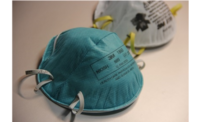Healthcare workers face many challenges in their job and the COVID-19 pandemic has only increased the amount of pressure that they face. It’s important that employers provide the right equipment and support to help their staff get through these uncertain times. Lone healthcare workers often conduct in-home visits to patients without supervision.
Some lone healthcare workers have experienced verbal abuse, violence and aggression from patients and relatives, people with weapons or people who are under the influence of drugs or alcohol. While not all lone healthcare workers have experienced violence, they are more than three times likely to experience verbal or physical abuse than people in other professions with only police officers and security guards at higher risk.
During this pandemic it’s vital to not only consider safety but also health. Caregivers have a responsibility to their patients to take necessary precautions. Here are some ways that employers can help mitigate risks to their staff.
Employer responsibilities
Employers have a legal obligation to keep staff safe at work but they also have a moral and ethical responsibility too. Here are a few things all employers should have in place for lone healthcare workers:
Training
Employers should provide mandatory training to all lone workers before they start working. Organizations need to ensure good records are kept by employees and risk assessments are performed regularly so all information is up to date.
Lone Worker Policy
Every organization should have a lone worker policy implemented so staff are aware who is accountable and what the roles and responsibilities are of different people in their workplace so they know who to speak to if a problem arises.
Risk assessments
Risk assessments are critical for identifying and managing the risks to lone workers to reduce potential harm. Every organisation must have a risk assessment sheet to adequately train employees on how to perform a risk assessment to ensure their safety with a new patient or client.
Here are the main reasons for performing a risk assessment of a client:
- To understand any known history of aggression or criminal history
- To understand any past or current substance abuse
- To understand any known emotional or psychological concerns
- To be aware of any identified hoarding/squalor issues
- To know if they have any pets, and if so, request that they are tied up or put in a separate room
Due to coronavirus, risk assessments should also include identifying any extra health precautions if the patient suffers from any respiratory illnesses or cancer.
As well as performing a risk assessment for clients and patients, risk assessments should be done by employers on staff members.
Why are risk assessments important?
Risk assessments are important for a number of reasons, but during a pandemic they are especially critical. If we look at the safety aspect, identifying potential risks allows a lone healthcare worker and their organisation to find solutions to downgrade risks.
For example, if an employee is inexperienced they may not know how to deal with a situation if a patient or their family member started to show aggression. The employer can team up a new staff member with an experienced staff member so the new member can see how their colleague deals in certain situations.
From a health perspective, knowing a patient’s medical history allows the healthcare worker to take extra precautions such as wearing protective gear to stop transmission of the disease. An employer should also know about any existing medical conditions that their staff may have that could pose a risk to a client.
Protective equipment for healthcare workers
An Australian and US scientific review has found that World Health Organization (WHO) guidelines on social distancing in hospitals and other healthcare facilities are based on outdated evidence. The review found that COVID-19 can be dispersed in fine air particles and that they can travel farther than one meter while remaining in the air for hours at a time.
So lone healthcare workers should not only be wearing face masks but N95 respirators which are the most effective as they keep 95% of small airborne particles from entering. Other equipment that should be work include goggles, medical gloves and non-sterile long-sleeved gowns.
A duress alarm is another item that every lone healthcare worker should carry on them. In the unlikely event that the worker is put in a vulnerable position and needs to call for help, the duress alarm can be activated by the press of a button. This alerts a worker at a monitoring center who will contact the wearer to find out what kind of help they need. A duress alarm can be worn around the neck or wrist and doesn’t inhibit the person from working. This device is also useful if the patient needed urgent help and the healthcare worker was not near their mobile phone.
Staying connected with others
Social isolation can take a toll on everybody. In a recent poll, 45% of adults in the United States reported that their mental health had been negatively impacted due to stress or worry over the virus. In China during the peak of the pandemic it was reported that medical staff were suffering higher levels of anxiety, insomnia and depression.
Healthcare workers need to care for their own health before taking care of others so they can do their job properly. Staying in contact with friends and family is vital to looking after one’s mental health. There are a few ways lone healthcare workers can reduce stress such as:
- Taking a break from watching or reading the news
- Switching off from social media
- Reading a book
- Calling a friend or family member
- Exercising
In closing, employers need to look after their staff so that their staff can look after their patients. It’s important that despite the pandemic that medical organizations remember that safety is also a priority.







